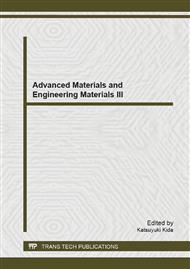p.760
p.765
p.769
p.773
p.777
p.781
p.790
p.794
p.798
Green Performance Assessment of Power Battery for Electric Vehicle Based on Multi-Objective and Multi-Stage
Abstract:
Green performance assessment of power battery is a whole life cycle process, which integrates Environment (E), Resource (R), Technology (T) and Cost (C) objectives considered as evaluation of multi-objective and multi-stage. According to definition of Green Product, the assessment model of multi-objective and multi-stage for power battery was built. The green utility function is proposed, by which the evaluation data of indices are changed uniformly into range of (0, 1) according to the assessment standard initialized as 0.5. The synthesis calculation method is given, which remains all the messages in the assessment. Finally, the green performance comparison between lithium-ion battery and nickel metal hydride battery proves the assessment method and process.
Info:
Periodical:
Pages:
777-780
Citation:
Online since:
February 2014
Authors:
Keywords:
Price:
Сopyright:
© 2014 Trans Tech Publications Ltd. All Rights Reserved
Share:
Citation:


